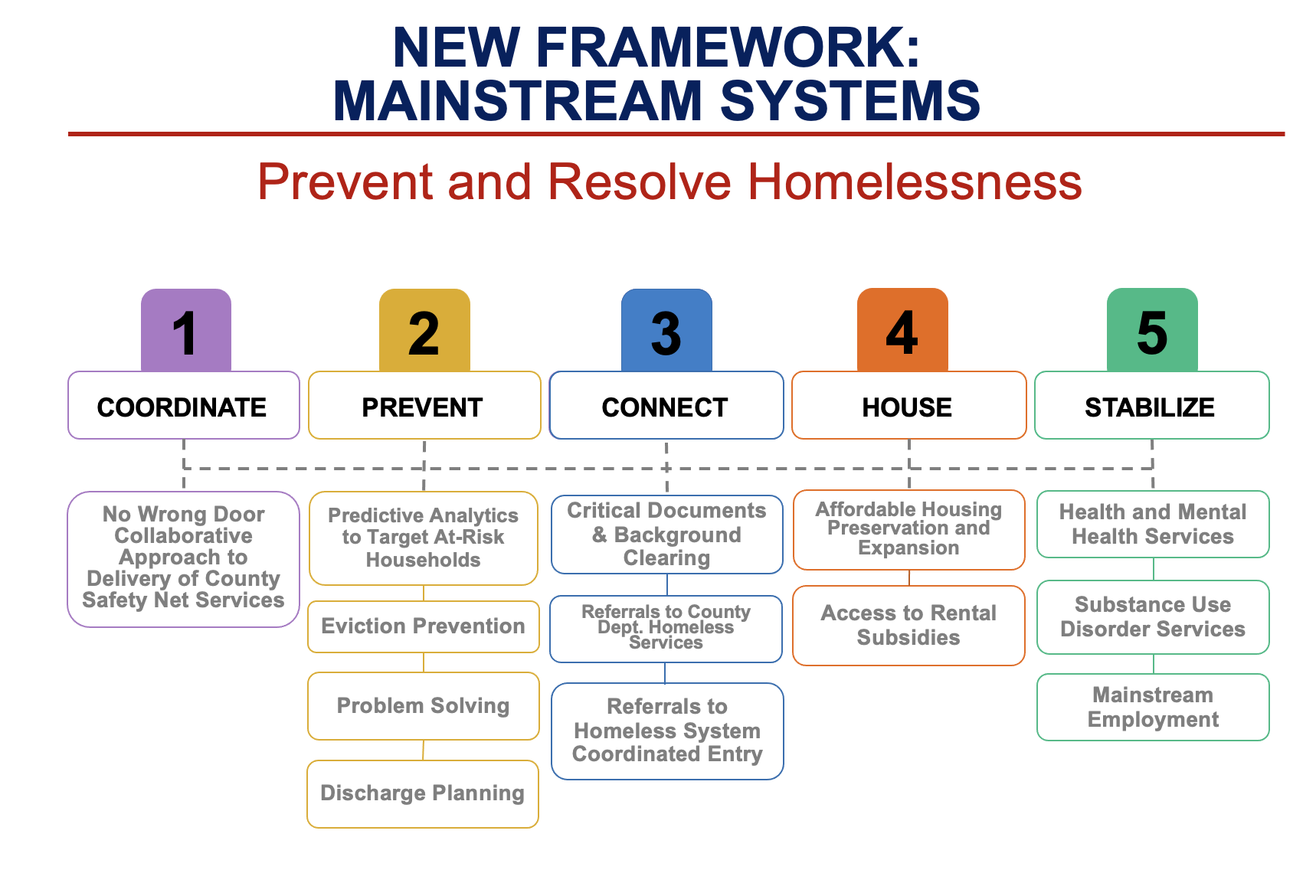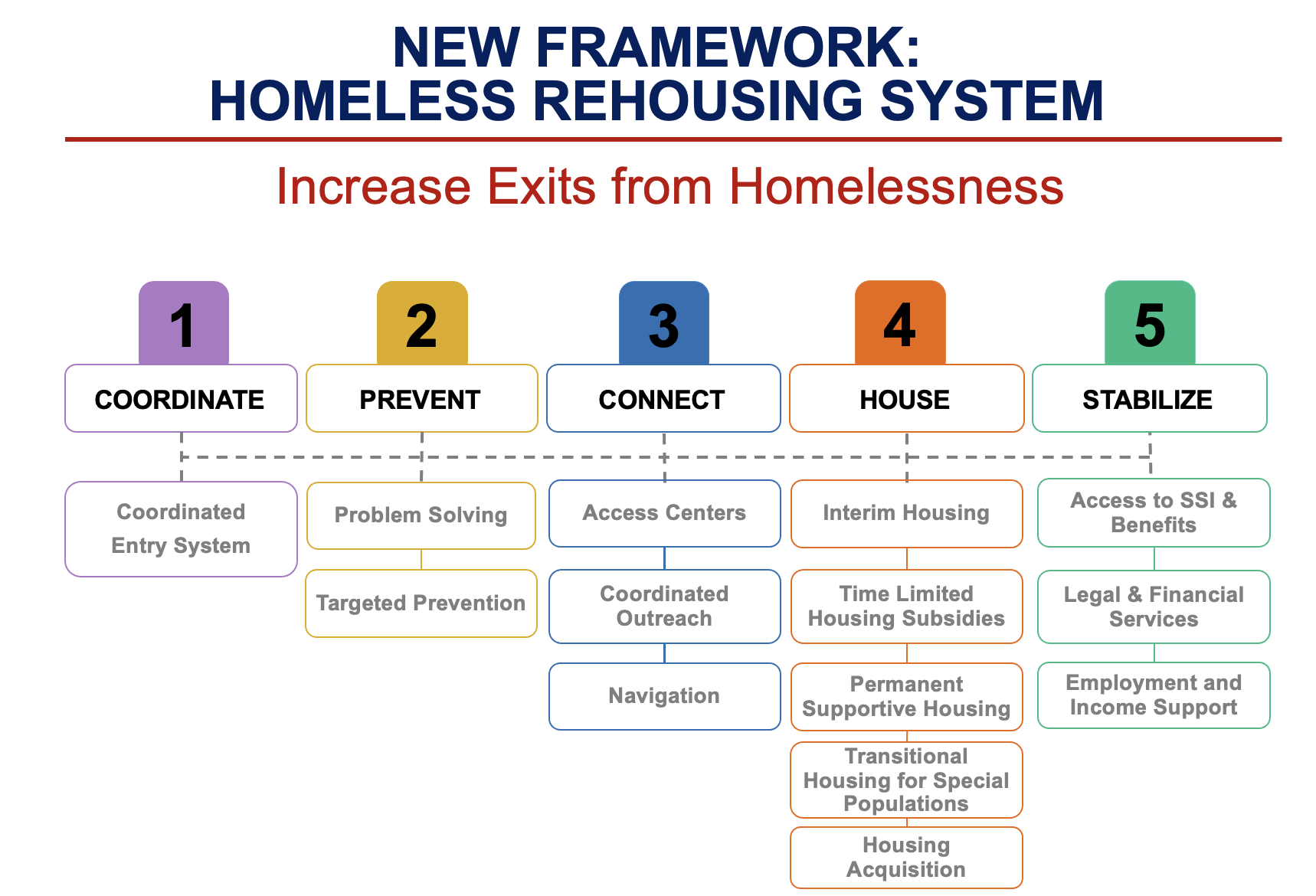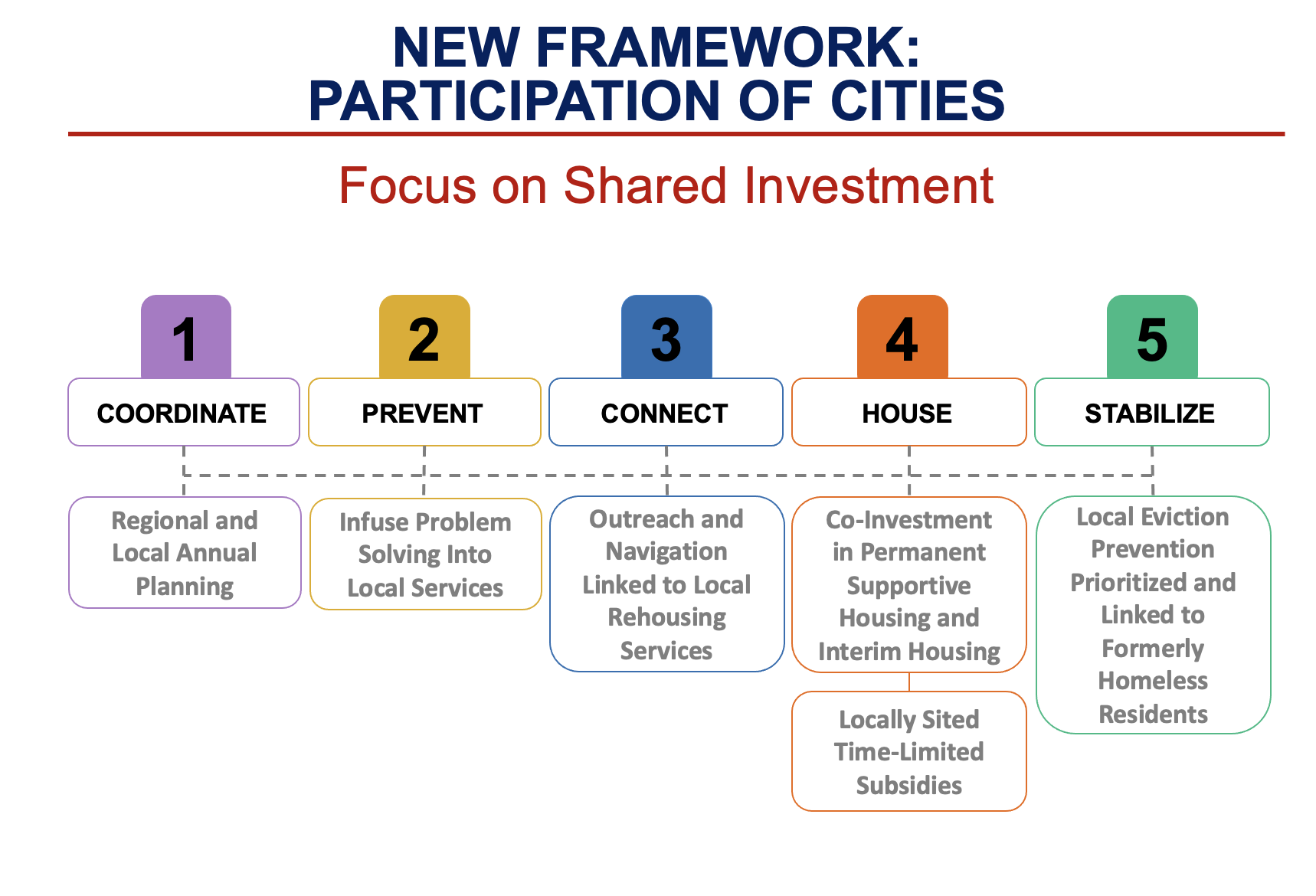“While Los Angeles County is housing more people — and at a faster rate — than ever before, we still have a lot of work to do keep pace with the number of people becoming homeless every day,” Homeless Initiative Executive Director Cheri Todoroff said. “This proposed new framework is a natural evolution of what the Board of Supervisors started in 2015, when it declared homelessness a priority and approved our original action plan. It builds on lessons learned over the years to develop a significantly scaled-up, streamlined, equitable, all-hands-on-deck response to a dynamic and deepening homeless crisis.”
A New Framework to End Homelessness
Los Angeles County has housed about 80,000 people experiencing homelessness over a span of five years – about 1.5 times the capacity of Dodger Stadium – and provided thousands more with interim housing and services to put them on a path to long-term housing stability.
But with homelessness still at critical levels, driven by the severe affordable housing shortage, economic hardship exacerbated by the pandemic, structural racism, and other factors, the Board of Supervisors unanimously approved a new framework of strategies recommended by the Homeless Initiative for tackling this complex societal issue.
The new framework developed by the Homeless Initiative focuses on three key partners — Mainstream Government Systems, the Rehousing System, and Partnerships with Cities — each taking action to Coordinate, Prevent, Connect, House, and Stabilize people experiencing or at risk of homelessness.
- Maximizing the capacity of Mainstream Government Systems, such as the health care and social services systems, to serve as the first and largest safety net for people who are vulnerable, especially those with housing insecurity. County Departments can help ensure there is “No Wrong Door” for people seeking help and take advantage of data-driven approaches to identify and prioritize the most at-risk households to prevent them from becoming homeless in the first place.
- Ensuring that the County’s Rehousing System remains a system of last resort, focused primarily, but not exclusively, on helping people who have been persistently underserved — those with the most complex challenges who require ongoing, focused, and resource-heavy intervention to help them get off the streets and into housing.
- Forging stronger Partnerships with Cities, including by pooling resources or co-investing with them to develop more permanent housing, and by coordinating with them when encampments are being decommissioned to provide pathways to housing and services.
- Advancing Racial Equity across policymaking, planning, funding, and implementation.




Original Strategies
In 2015 and 2016, the Homeless Initiative conducted 18 policy summits to ensure its original strategies included input from diverse stakeholders, including elected officials; County departments and agencies; cities and Councils of Governments; policy experts; service providers; community, business, labor, philanthropy and faith-based organizations; as well as people with lived expertise.
Those summits resulted in an action plan with 47 strategies that later expanded to 51 strategies in an implementation plan approved by the Board of Supervisors in 2017.
Updated Strategies


